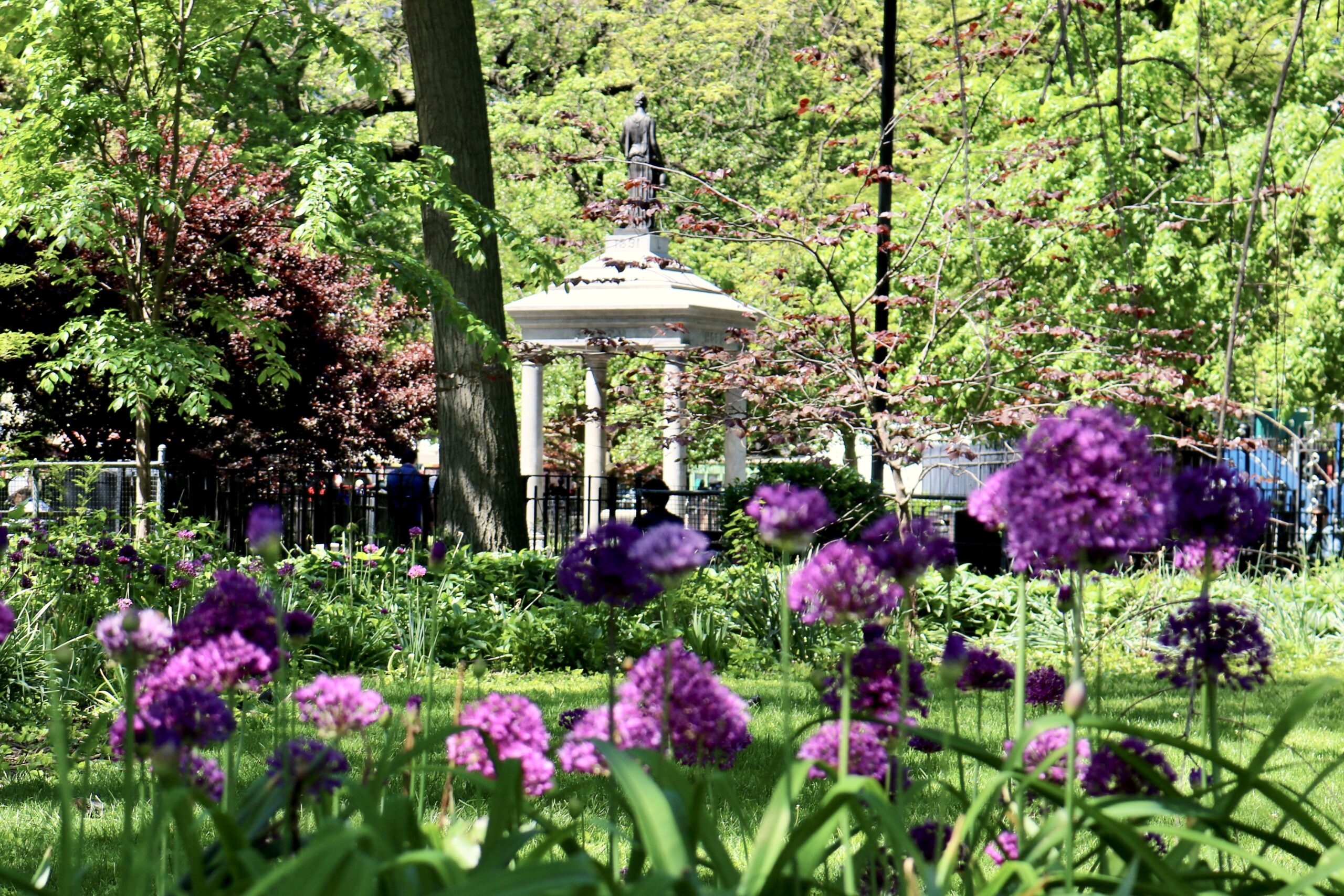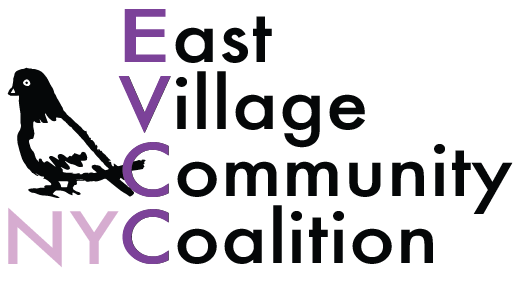Tompkins Square Park owes much to the diligent stewardship and conservation of the Lower East Side Ecology Center
by Melinda Billings
Spring is when Tompkins Square Park really comes to life. You’ll see it in the people out walking and talking, the children laughing in the playgrounds, in the flowers beginning to bloom and in the leaves appearing on trees.
But what you might not see, or at least realize, is that these rites of spring happen in great part because of the hard work put into the Park by the Lower East Side Ecology Center and other community groups.
The LES Ecology Center opened in 1987, when Christine Datz-Romero and Clyde Romero—two locals with a passion for both the environment and their neighborhood—brought their people-powered approach to conservation and sustainable living. They were ahead of their time, too. The Ecology Center brought recycling services to the Lower East Side (a drop-off site at the 6th Street and Avenue B Garden) six years before NYC established its own citywide recycling program. Now, three and a half decades after starting its environmental programs, and often while working with the NYC Department of Sanitation and the Department of Parks, the Ecology Center continues to lead the way in developing new community-based models of urban ecology.
As one of the larger, somewhat natural spaces in the Lower East Side, Tompkins Square Park gets a lot of attention from several community groups, including the LES Ecology Center.
There are general initiatives such as stewardship and conservation, as well as specific tasks, such as planting, removing of invasive species, mulching using compost and woodchips and watering.
The Ecology Center attracts volunteers to its stewardship events, from both the corporate world as well as from the surrounding community and its schools. In spring, volunteer teams help with park maintenance, removing litter, weeding out invasive plants, and adding mulch, compost, or water—or any combination of those. Stewardship coordinators also develop designs for planting beds, order plants, photograph and monitor planting beds and local wildlife, and order other supplies.
Bulbs that were planted in Tompkins in their thousands last fall begin to bloom in spring, and this is the time the Ecology Center also plants native plants, shrubs and perennials which are essential for supporting native birds, bees and butterflies.
Few park-goers will recognize the names of these plants, but they do see and feel the benefit. Here are examples that work their natural magic with different insects and birds:
Blue Lobelia attracts bees and hummingbirds and is
the host plant (a specific plant on which an insect feeds and
lays its eggs) to six species of butterflies and moths;
The New England Aster is a larval host plant for the pearl
crescent butterfly;
Coreopsis are host plants for moths and butterflies and
attract as many as 22 native bee species. Meanwhile, birds
such as cardinals, chickadees, goldfinches, and
sparrows eat the seeds;
Swamp milkweed is a host plant for the famous monarch
butterfly—and plays a significant role in the Monarchs’
ongoing conservation;
Sneezeweed’s nectar is a magnet for pollinators, attracting bees and butterflies by the dozen;
Spicebush provides fruit for migrating birds and its a host plant for Spicebush Swallowtail birds.
For all the hard work, huge challenges remain. New York City parks continue to be underfunded. Extreme heat caused by climate change endangers many species. Sadly, Tompkins has no irrigation system apart from hand-held. Squirrels will eat bulbs or just dig them up. On a social level (for want of a better term), in the planting beds we find hypodermics—and sometimes people sleeping!
But the work goes on. Our volunteers have planted more than 500 native plants and 24,000 bulbs in Tompkins. This summer, groups from NYC’s Summer Youth Employment Program (SYEP) will again work at Tompkins for three days a week, gaining valuable job skills and a better understanding of the natural world around them.
We’ll continue with the longest-running community compost program in New York City—now in its 35th year—and will as usual collect food scraps at Tompkins Square Farmers Market every Sunday.
Our E-Waste Reuse and Recycling Program, begun in 2003, will accept electronics from residents, small businesses, and non-profits (we guarantee data security, and donations are tax-deductible). And we’ll continue our numerous workshops that cover everything from composting to seasonal fishing.
New for this spring…we’re honoring “The Coolest Block on the Lower East Side,” an ongoing educational exercise in tree care and proper stewardship of precisely where you live.
So although the funding challenges may be the most severe in our history, our aim is true, our mission remains sound.
See you in Tompkins this spring!
More information on the LES Ecology Center here. To stay in the know, sign up to our newsletter on the home page.
Melinda Billings is the LES Ecology Center’s Stewardship Coordinator.


